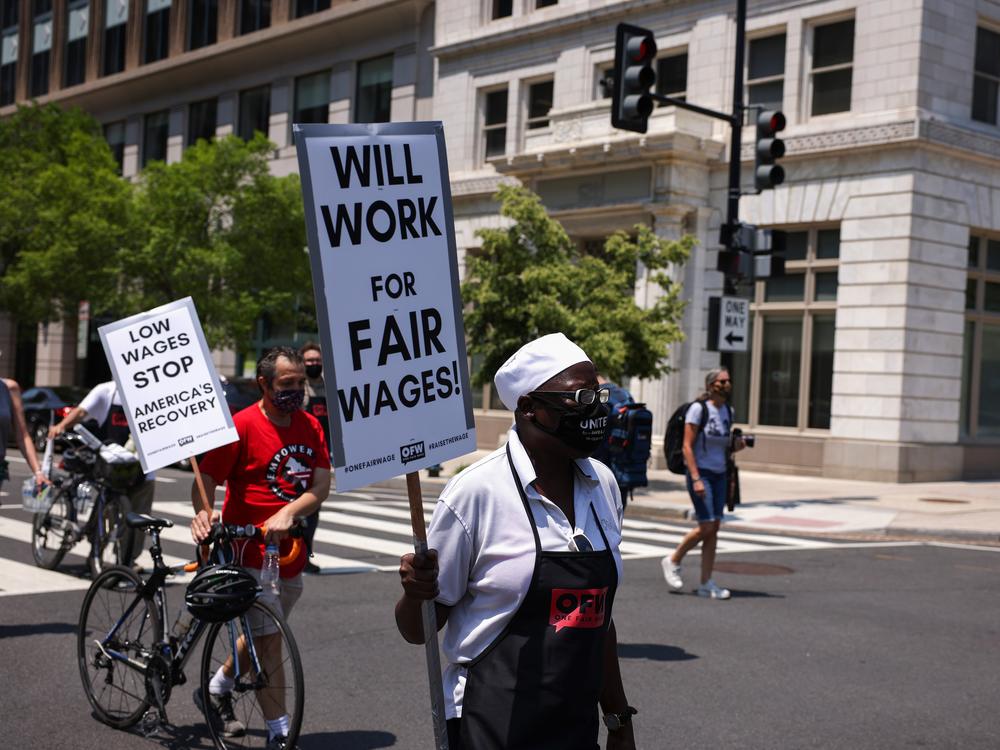Section Branding
Header Content
It has now been 15 years since the federal minimum wage rose to $7.25
Primary Content
The most recent hike to the federal minimum wage occurred on July 24, 2009, back when former President Barack Obama was still in his first year in office and the Black Eyed Peas topped the Billboard charts.
At that time, it rose 70 cents from $6.55 per hour to $7.25 and it has stayed there for the last 15 years. That's the longest stretch the national minimum wage has gone without an increase since the U.S. instituted the pay standard in 1938, according to a Department of Labor timeline. Meanwhile, the value of the dollar has diminished, and prices on everyday goods have taken off.
That’s not to say that all minimum wage workers in the U.S. make $7.25 an hour.
According to the Bureau of Labor Statistics, around 869,000 workers in the U.S. earned the federal minimum wage or less in 2023, more than two-thirds of whom were women.
Some workers may earn less than the federal minimum wage because there are exceptions built into the law. Businesses are only required to pay tipped employees $2.13 per hour in direct wages under federal law, though employers have to make up the difference if those wages plus tips don’t equal the federal minimum wage. Other carve-outs to the minimum wage requirement include some workers with disabilities, employees under age 20 and full-time students.
In 20 states, mostly in the South and Midwest, the federal minimum wage is in effect, according to the Economic Policy Institute. The other 30 states and Washington, D.C. have minimum wages higher than the federal standard, according to EPI data.
Additionally, at least 63 cities and towns — including New York City and Los Angeles — have local minimum wages higher than their state’s requirement, with new wage hikes still occurring, according to the EPI. Chicago's minimum wage rose to $16.20 per hour this month.
In 2022 the Biden administration also increased the minimum wage for 70,000 federal workers and 300,000 federal contractors to $15 per hour — and urged Congress to do the same for all workers.
Loading...
Despite rising minimum wages at the state and local level, some economists believe the national standard should also be increased in order to benefit all workers across the country — including the nearly 900,000 still being paid at the federal minimum.
“It is shameful that the US, the wealthiest country in the world, ranks #19 on minimum wages across the world,” said Sylvia Allegretto, a senior economist at the Center for Economic and Policy Research, in a press release earlier this month. “Nowhere in the US can a full-time worker meet their basic needs on the federal minimum wage.”
According to the Consumer Price Index, the spending power of one dollar in 2024 is only 70% of what it was in 2009 when the federal minimum wage last went up.
Prices on food and other goods have been rising with inflation or leveling off (but not decreasing), mortgage rates are surging to levels not seen in decades and many Americans are racking up credit card debt to afford everyday essentials.
The rising cost of living aside, many companies and business leaders have long argued that upping the minimum wage any further could harm small businesses and force companies to further raise prices on consumers.
A proposal introduced in the Senate last year called the Raise the Wage Act of 2023 that would increase the federal hourly minimum wage to $17 over five years has not advanced.

